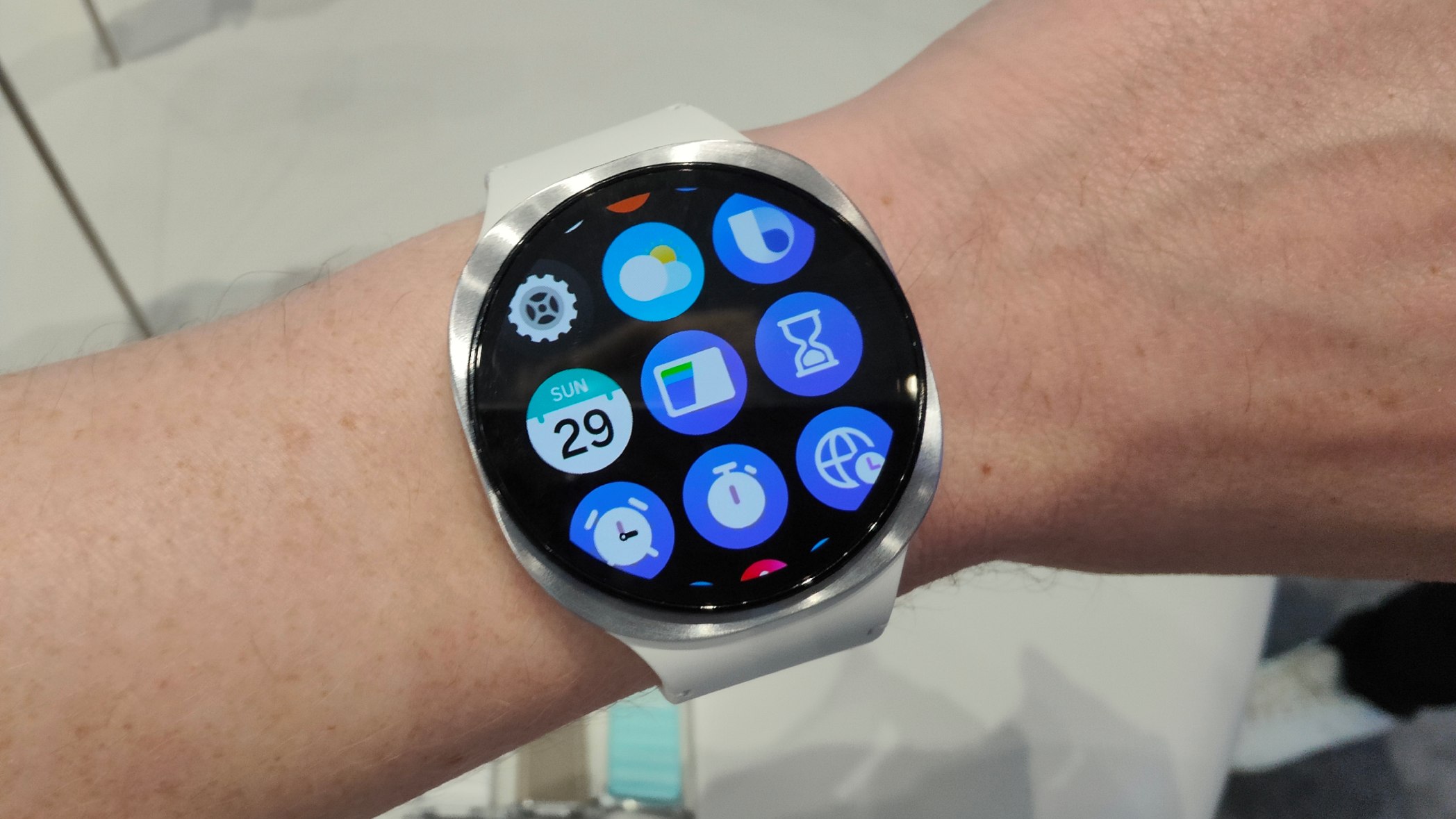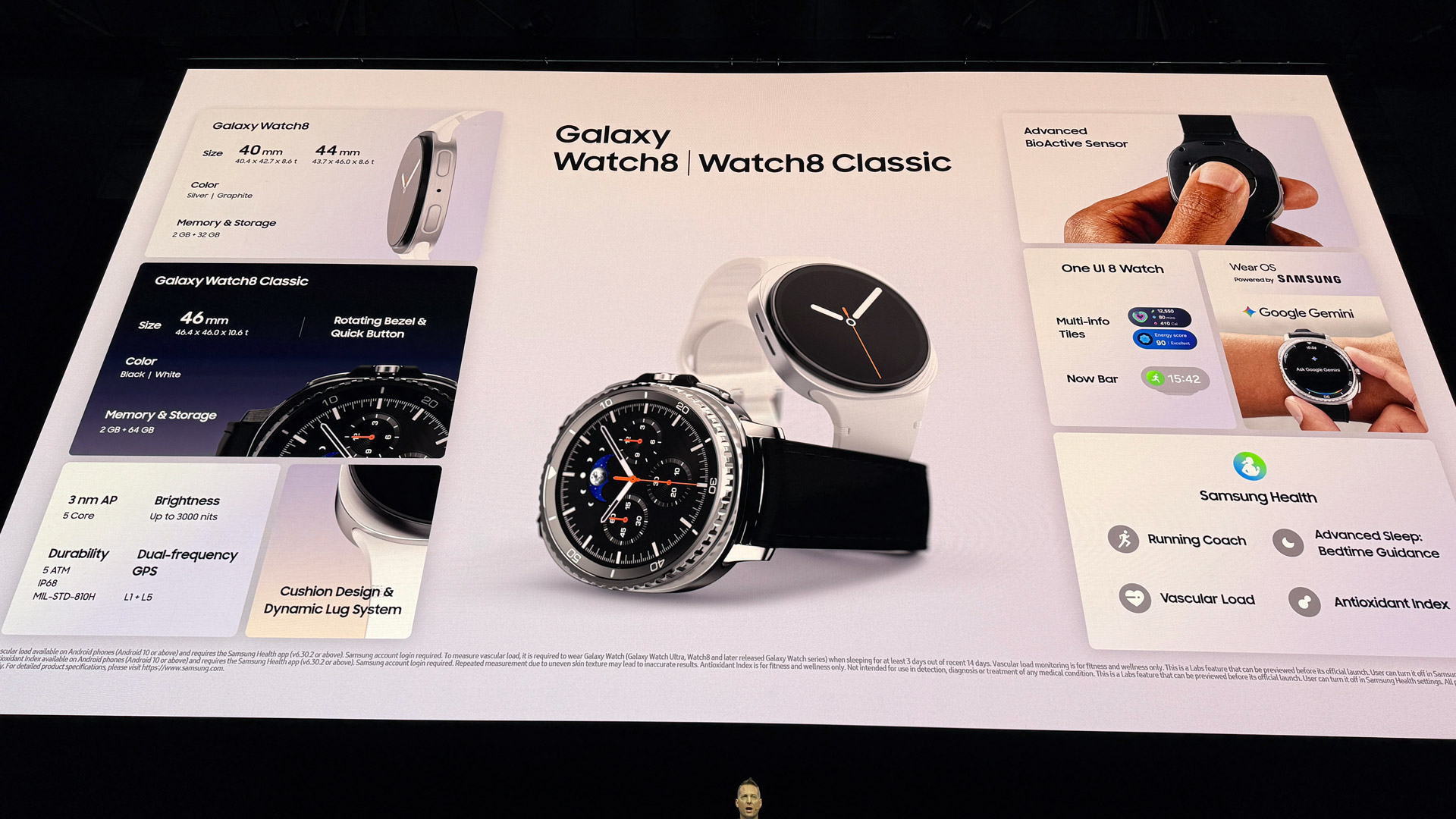These are the secrets of the Galaxy Watch 8 antioxidant sensor
It's not about the blood

One of the most innovative, if least understood updates in Samsung's new Galaxy Watch 8 is the new antioxidant index metric, which uses Samsung's latest BioActive sensor. Unlike sensors that look under the skin for, say, blood oxygenation or heartbeats, these new yellow, blue, and violet sensors focus on the surface and measure your level of antioxidants.
According to Samsung executives who walked us through Galaxy Watch 8's latest health capabilities shortly after unveiling the new wearables at Samsung Galaxy Unpacked on July 9, measuring antioxidant levels on the skin relates directly, though not immediately, to your eating and drinking habits. Certain foods, for instance, like fruits and vegetables, might raise the antioxidant levels in your skin. Having higher antioxidant levels might help stave off illness.
We were shown what looked like a direct correlation between, for instance, drinking alcohol during the holidays and how that might lower antioxidant levels. These levels, by the way, are represented in a chart you can read on your Samsung Health app.
Even if you put the Samsung Galaxy Watch 8 on when it's available on July 25, and have a healthy salad instead of a burger and fries, the watch may not immediately read any differences. Antioxidant readings appear somewhat cumulative on the skin and might take a week to show up.
There's also the matter of how you use the new Galaxy Watch 8 sensors.
Now, ironically, it seems, Samsung worked hard to reengineer the Galaxy Watch 8 and its band attachment system to bring the watch closer to your skin. My sense is that these watch backs sit on your wrists, so I'm not sure how much closer they can get, and the executives didn't entirely explain that.
Even so, for this newest sensor, it doesn't matter. The only way to read your antioxidant levels with the Samsung Galaxy Watch 8 is to take it off your wrist and press your thumb against the BioActive sensor on the back of it.
Sign up for breaking news, reviews, opinion, top tech deals, and more.

We asked why the sensors couldn't read the antioxidant levels on the wrist, and it turned out to be a fairly obvious answer.
"We tried a lot with the measurement on the wrist, but there is – we really want to measure from skin, not the blood. Here [indicates wrist], there are many capillaries."
Essentially, a wrist measurement would be looking at (or confused by) the blood in those capillaries and not reading the skin. When you press with your thumb, you actually push away all the blood, so the sensors read the antioxidant levels in the skin more easily.
When I asked why the thumb and not other fingers, it turns out it could be done with your other fingers, but doing the reading with a thumb is just more comfortable.
While this makes perfect sense, this sensor might get used less than others because it's not a passive reading. Instead, it's more like ECG, in which you have to sit still and put a finger on the top button for 20 seconds or so. You actively choose to take this reading, plus you must take off the watch to do so.
Samsung acknowledged there's no notification telling you to occasionally take an antioxidant reading, which means this could end up being a little-used health metric.
Having those antioxidant readings could be useful for understanding your overall wellness as it relates to eating habits, but the other hurdle is remembering what you ingested and when, and few enjoy keeping a diary of their food intake.
I suggested that the upcoming Project Moohan Glasses (a joint XR project between Samsung and Google) might assist here, actively seeing and tracking everything you eat. The Samsung Exec said it's a good idea.
You might also like
- Samsung Galaxy Unpacked 2025 as it happened – the new Z Fold 7, Z Flip 7 and Galaxy Watch 8 are here
- Hands on: I just tested the Samsung Galaxy Watch 8, and it’s thinner, brighter and tougher than ever
- Hands on: The Samsung Galaxy Z Fold 7 captures the essence of Ultra in a ludicrously thin device, and I still can't believe it

A 38-year industry veteran and award-winning journalist, Lance has covered technology since PCs were the size of suitcases and “on line” meant “waiting.” He’s a former Lifewire Editor-in-Chief, Mashable Editor-in-Chief, and, before that, Editor in Chief of PCMag.com and Senior Vice President of Content for Ziff Davis, Inc. He also wrote a popular, weekly tech column for Medium called The Upgrade.
Lance Ulanoff makes frequent appearances on national, international, and local news programs including Live with Kelly and Mark, the Today Show, Good Morning America, CNBC, CNN, and the BBC.
You must confirm your public display name before commenting
Please logout and then login again, you will then be prompted to enter your display name.